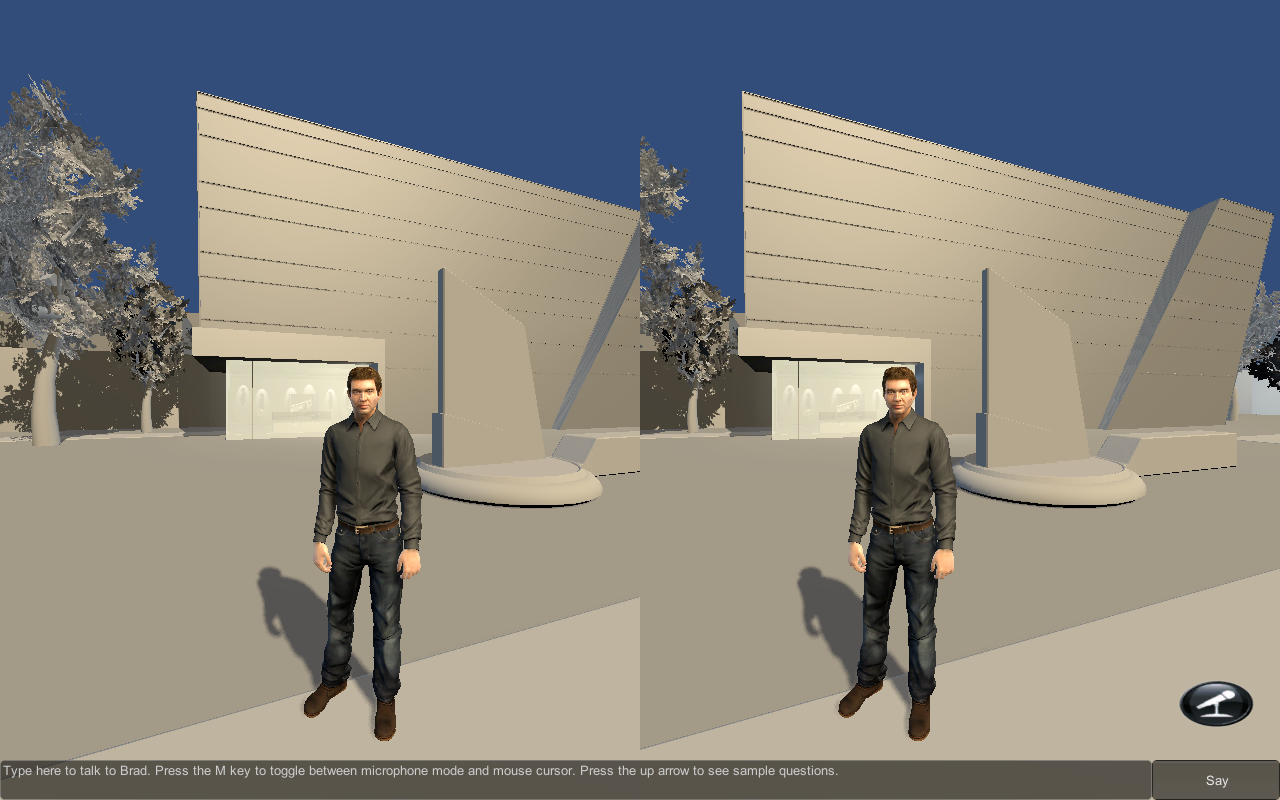Oculus Rift is easy to use and setup, as it's treated as any other display screen using Plug and Play.
- Plug in the HDMI/DVI cable
- Plug in the USB that sends out the sensor data to the CPU.
- Plug in the Power Cord.
- Press the power button.
- Ensure Windows display setting for the Oculus is set to 1280 x 800.
- Load OculusRiftTest scene in the Editor or build (for the latter, use the C key to bring up the debug menu and select the level)
- If loading from a build, ensure the Resolution setting for the Renderer is set to 1280 x 800. It can be either fullscreen or windowed.
- You can switch between the camera modes by using the shortcut key N. There are three modes in that scene:
- Normal mode: This is the normal camera mode without Oculus HMD
- Oculus Camera: This is the Oculus HMD mode where your head movement controls the camera rotation.
- Oculus Camera with movement: This is the Oculus HMD mode with full degree of freedom. In addition to rotational tracking of head movement, the WSAD or arrow keys translate the camera position.
- Mouse input remains active, allowing you to quickly rotate the camera in yaw.
Notes
- Do not change the brightness/sharpness from the control panel of the Oculus Rift.
- If you use glasses, change the lens cups to B or C otherwise use cups A only.
- There are two screws on the sides to adjust the distance of the screen from the eye. Keep the screen as close as possible to the eye by rotating the right screw all the way in the anti-clockwise direction and the left screw all the way in the clockwise direction.
Known Issues
- In the build, when returning to Normal mode the cursor becomes hidden for the duration of the session. Close and reopen the Unity window to correct.
Overview
Content Tools
Activity
